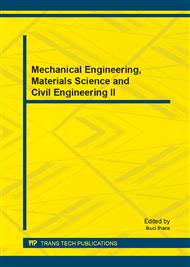p.3
p.7
p.11
p.15
p.19
p.23
p.27
p.31
Bright Line Defects of Hot Rolled Plate for 2205 Duplex Stainless Steel
Abstract:
In hot rolling process of 2205 duplex stainless steel, it was found that bright line defects are mainly located at where is about distance of 200 mm from two sides of hot rolled plate. The forming reason of bright line defects is studied by means of metallographic microscope, scanning electron microscope (SEM) combined with energy dispersive spectrometer (EDS). It is concluded that the formation of bright line defects has associated with sticking and that the temperature reduction on the edge of hot rolling plate causes a high percentage of austenite phase which is network structure. In order to prevent or avoid the happening of the sticking phenomenon, it is necessary to uniformly distribute the oxide on the strip surface by controlled rolling process.
Info:
Periodical:
Pages:
15-18
Citation:
Online since:
December 2013
Authors:
Price:
Сopyright:
© 2014 Trans Tech Publications Ltd. All Rights Reserved
Share:
Citation:


